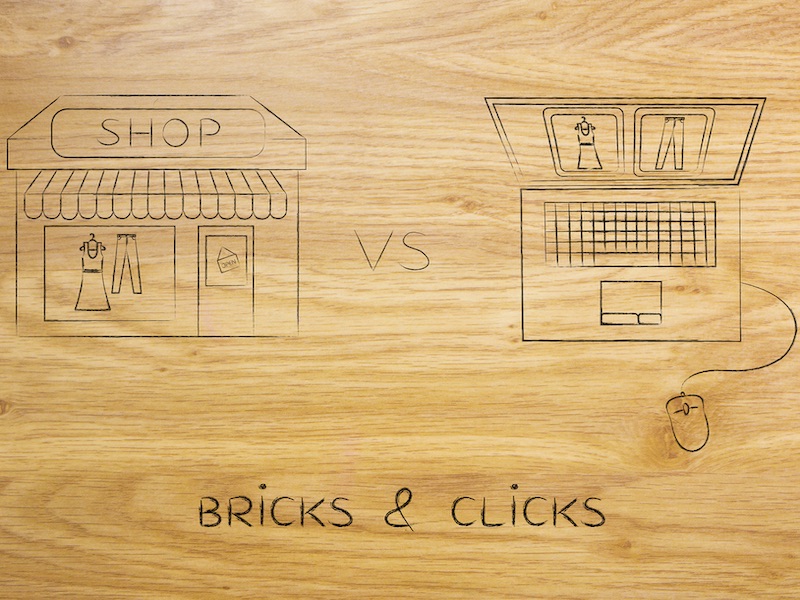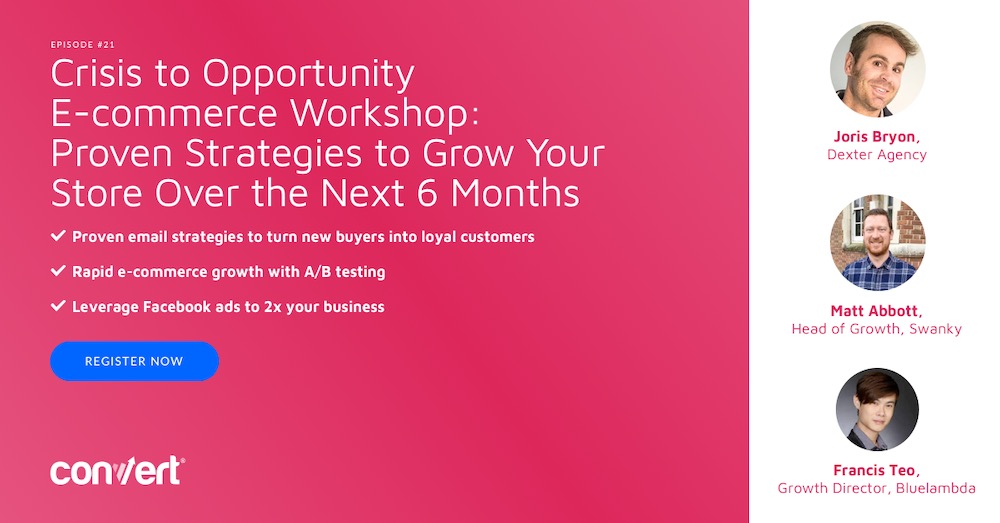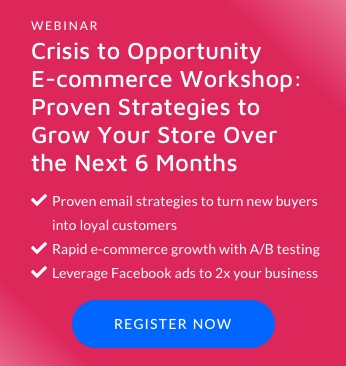Moving from Brick and Mortar Retail to An Ecommerce Store? Here are 6 Things to Keep In Mind

The Covid-19 pandemic has changed how customers buy products.
Stay-at-home orders put in place to stop the spread of the coronavirus proved to be a boon for ecommerce stores. Online grocers like Instacart and Farmstead saw orders increase by 10% and 30% in one week in March.
With countries easing lockdown measures, the expectation that consumers will return to brick and mortar retail stores is not the reality. In a Salesforce survey, 68% of respondents in the US say they expect to keep buying essential products online even after the threat of Covid-19 has passed.
Companies with physical stores are increasingly turning to their ecommerce outlets to grow revenue as sales from brick and mortar stores declined in the past months.
Online sales have grown 3x while sales from physical stores have dropped since the pandemic started.
Ecommerce platform, Shopify, reports that new stores created on their platform increased by 62% in a 5-week period from March to April.
With the mass exodus to ecommerce, it is imperative that businesses understand how customers behave online. Understanding customer behavior ensures that your ecommerce store can properly cater to customers and increase revenue.
Amid a pandemic and recession, providing the best service possible requires experimentation.
Optimization and experimentation are key to identifying and understanding buying patterns. Use this knowledge to identify points in your funnel that need to be optimized. Test solutions, ship them out, and iterate.
If the shift is too rapid, you can reach out to agencies experienced in running experiments and optimizing ecommerce websites.
As you funnel customers to your online store, remember that experimentation is important to keep them coming back. Here are a few things to keep in mind as you go along:
Identify Shifts in Consumer Behavior
The only way to identify shifts in consumer behavior is research. Qualitative and quantitative research will help you find shifts in buying trends. These help you understand customer behavior and how it is changing in real-time.
Quantitative research from your web analytics, heatmaps, among others, allows you to draw a conclusion about what customers want, how they come to your ecommerce site, what they do when they’re there, and areas of potential frustrations for them.
Qualitative research takes things to a whole new level. Customer feedback via online reviews, polls, and customer service queries gives you an insight into what your customers are thinking and the reasons behind some of the behaviors you uncovered doing quantitative research.
[WATCH WEBINAR] Recession Proof CRO: ROI In Rapidly Changing Times
Fix Issues in Your Funnel
Funnel analysis is crucial to understanding where customers to your ecommerce store drop off.
Here’s what a simple funnel looks like:

Analyzing the funnel through which your customers pass on their way to making a purchase will make it easy to see where there are drop-offs.
Say 1000 customers visit a particular product page and half of them add the product to their cart. Of this 500, only a 100 proceed to the checkout page. Of this 100, only 20 end up paying. With funnel analysis, you can see where drop-offs occur and are better prepared to find out and fix the issue. HotJar’s funnel feature provides a great way to view and analyze your funnel.
You can segment the customers who are stuck via the device they used, product group, time, and others. Then take time to dive deeper with customer feedback, session recording, and usability research to pinpoint why they’re stuck on a particular step in your funnel.
Once you’ve found the problem, you can form a hypothesis and design a variation to run an A/B test all from within Convert Experiences. With a winning variation, you can ship out the variation using Convert as a quick deploy CMS if you’re pressed for time and developer resources.
Test Forms on Your Site
While form analysis can be done at the same time as funnel analysis, pay attention to forms in your funnel, especially if there is a huge drop off there.
With forms, the common practice to reduce friction is reducing the number of fields in the form. But this doesn’t take into consideration the context of your customers and the information needed on your forms. This is where form analysis comes in. If you find customers get stuck on one of your forms, test it!
Use a multivariate experiment to design forms with different elements changed or removed. Then use Hotjar, or any other heatmap tool Convert Experiences integrates with, to view visitor recordings to identify form fields that are blank, had multiple re-entries as well as other frustration points.
We work where you work. Here are some of the tools Convert Experiences integrates with.
Finally, A/B test the best form field combinations to find the one with the best submission rate.
Cross-Sell the Right Way
When done right, cross-selling will boost revenue. But when done wrong will annoy your customers and deny you a selling opportunity. For example, a customer who orders a watch to be delivered to their dad for Father’s Day may see a pop-up for Father’s Day cards during checkout.
Once you have nailed showing customers the right products to go with their purchases, you can test bundling similar products (with a discount) vs “People Also Bought” page or even both on the same page. For example, if you can test a bundled Watch and card package for Father’s Day at a discount vs a selection of products like cards, wines, flowers, etc. to go with the watch for Father’s Day.
Use the cross-selling format your customers respond to the best. This ensures your online store is doing cross-selling the right way – focusing on what customers need.
Fix Points of UI Confusion
Giving visitors a seamless experience every time they visit your website is important. Bugs, dead links, slow loading pages, and broken elements can cause confusion for visitors and may lead to their rage clicking that portion of your website. For example, visitors clicking on the image of a product to enlarge it may become frustrated when it doesn’t work. They could go back to the product category page or leave your website altogether.
Rage click can point to poorly designed user interfaces and help identify points of user experience improvement on your website. Session recordings from a heatmap tool or usability testing can help you identify points of confusion on your website. And you easily deploy a fix to improve customer experience on your website.
Counter Sales Objections
Unlike in-store shopping, online shopping experience requires an extensive return and refund policy. With the pandemic wreaking havoc on logistics and order fulfillment, your return and refund policies need to be updated to reflect the reality on the ground.
When conducting customer surveys and receiving feedback, be sure to ask whether your policies might have swayed their decision to purchase. Take a look at reviews to see what customers are saying about your return and refund policies. These will be a great indicator of what you need to change or improve on.
Conclusion
Moving from a brick and mortar store to an ecommerce website is not an easy transition. Extensive experimentation and optimization will make the transition easier and keep your customers coming back, especially in this ecommerce focused world.
To help you turn this crisis into an opportunity, check out this workshop we’ve organized with CRO experts from BlueLambda, Swanky Agency, and Dexter Agency:



